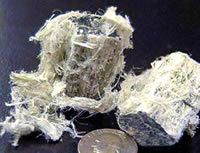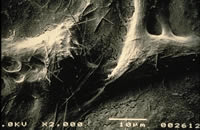|
|
Agency for Toxic Substances and Disease Registry
Case Studies in Environmental Medicine (CSEM)
Asbestos Toxicity
What Is Asbestos?
|
Upon completion of this section, you should be able to
- explain what asbestos is.
|
|
Asbestos is the name given to a group of six naturally occurring fibrous silicate minerals that have been widely used in commercial products. Asbestos is composed of silicate chains bonded with magnesium, iron, calcium, aluminum, and sodium or trace elements to form long, thin, separable fibers. These fibers are often arranged in parallel or matted masses.
Asbestos occurs naturally, but much of its presence in the environment stems from mining and commercial uses. |
|
Asbestos fibers are classified by mineral structure as serpentine or amphibole. |
| Serpentine |
Amphibole |
 |
 |
|
Long, flexible fibers |
Brittle with a rod or needle shape
|
|
Member: chrysotile |
Members: crocidolite, amosite, anthophyllite, tremolite, actinolite, winchite, richterite
|
|
Accounts for 93% of world’s commercial, purposeful use of asbestos |
Accounts for 7% of commercial, purposeful use of asbestos
|
|
Asbestos was widely used commercially because of its
- high tensile strength
- resistance to acids and alkalis
- resistance to heat and flame
- flexibility.
These properties make asbestos commercially useful but also stable in the environment. Asbestos is nonbiodegradable. Once released to the environment, asbestos tends to persist.
|
|
- Asbestos is a group of fibrous silicate minerals.
- There are two classes of asbestos: serpentine and amphibole.
- Asbestos was once used more widely for commercial purposes.
- Asbestos is stable and persists in the environment.
|
Previous Section
Next Section
|





